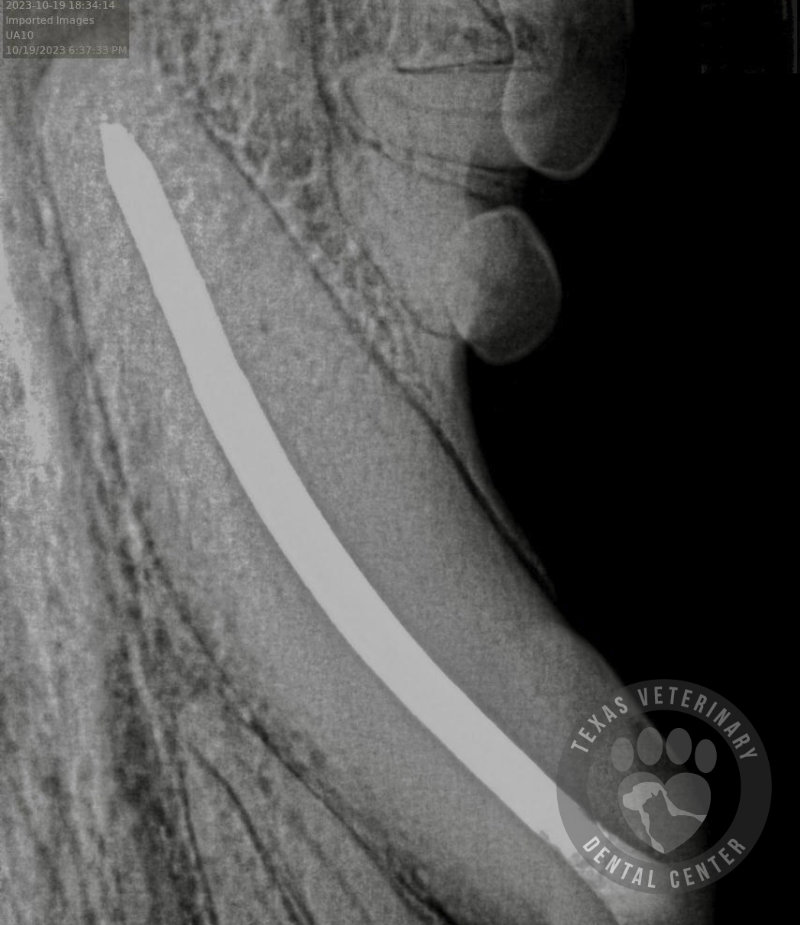CANINE & FELINE ENDODONTIC DISEASE
There are many causes of endodontic disease, however, in pet animal patients traumatic tooth fracture is the most common.

Endodontic treatment is therapy directed toward the pulp tissue (nerve and blood vessels) in the center of a tooth in an effort to preserve the tooth and not perform an extraction. There are many causes of endodontic disease in dogs and cats. However, trauma to the mouth and teeth is the most common. A recent study reported that 27% of dogs have fractured teeth as a result of trauma or chewing items that are too hard.
A fractured tooth with pulp exposure is a painful experience for the animal; however, the pet will rarely exhibit oral pain. Since pain significantly increases when the pet chews they may stop playing with their toys, but most pets will continue eating. Unfortunately, only very rarely will pets show discomfort. These pets are being affected locally as well as systemically.
Bacteria in the dog or cat’s mouth will contaminate the fractured tooth with pulp exposure and it will become infected. The bacteria will then use the root canal to gain entrance into the alveolar bone. The infection in the tooth will quietly cause a tooth abscess which results in bone destruction and eventual tooth loss if untreated. Consequently, the pulp that contains nerve tissue dies and the acute pain subsides while daily chronic pain begins.
Discolored teeth may also be a sign of endodontic disease. The tissue or pulp inside the tooth contains blood vessels, nerves and lymphatics which nourish and keep the tooth vital or “alive”. On occasion, a tooth will “die” as a result of trauma and become discolored. This is most common in dog canine and incisor teeth. The cause of tooth death is usually unknown to the pet owner, however trauma is the most likely cause. The non-vital tooth may become infected from bacteria in the bloodstream and will act as a bacterial reservoir just like a broken tooth. A recent study reported that 93% of discolored teeth are non-vital and in need of therapy.
Endodontic disease usually causes an abscess of the root tips that can result in facial or jaw swelling. The abscess may drain through the skin or inside the mouth. These abscesses are most commonly found in the large carnassal (chewing) teeth of dogs.
Our doctors are trained to evaluate teeth and perform endodontic therapy. This is most commonly a cat or dog root canal procedure. Veterinary root canal therapy is necessary to resolve chronic infections. Antibiotics therapy does not resolve infections within the tooth. An endodontic treatment called vital pulpotomy can sometimes be used to treat certain types of acute trauma and malocclusions.
Not every tooth and not every pet is a candidate for endodontic therapy. If your pet has a fractured or discolored tooth, let our doctors evaluate your pet and determine if a root canal is an appropriate treatment option for your dog or cat.
Texas Veterinary Dental Center
12810 Fountain Lake Circle
Stafford, TX 77477
